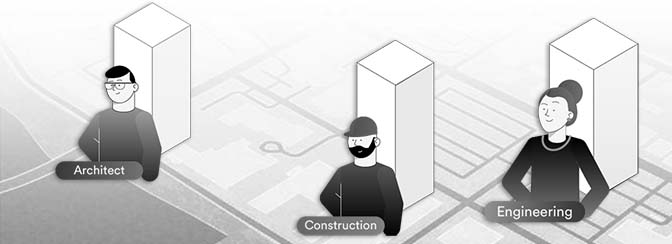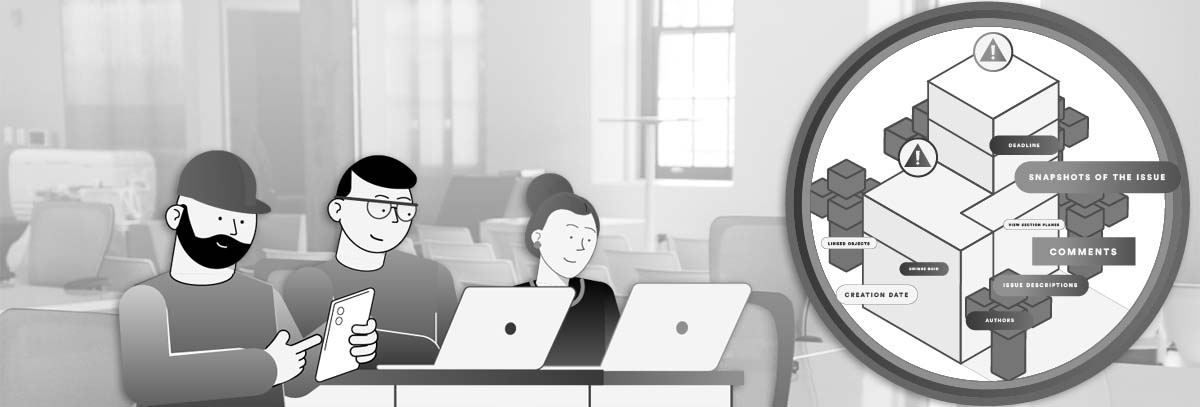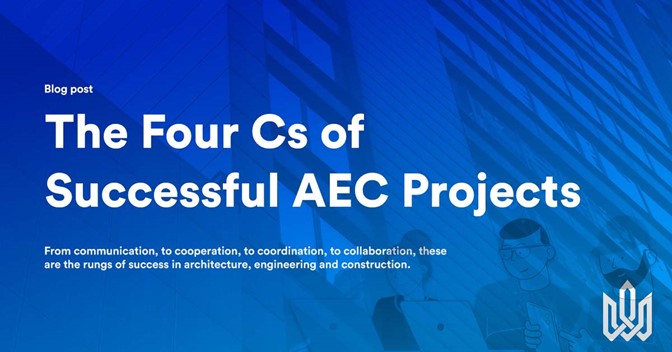Despite its outward appearance of being a slow adopter of new technologies, the construction industry is changing, and quickly! Traditionally, most discussions of the challenges in construction have revolved around questions of productivity, efficiency, value engineering, and quality; but today, the successful adoption of Information Technology (IT) and Building Information Modeling (BIM) are what lead the conversation.
For the foreseeable future, the adoption of technology and the digitization of processes and workflows will propel AEC firms to increase their productivity and efficiency. But like all tools, information or modeling technology is dependent on the expertise of its users; and expertise does not exist in independent silos, but in the interconnected approach of the entire organization.
Gone are the days where AEC firms could operate in their own little corner, each delivering their work to a centralized overseer to make sense of it all: successful AEC firms today are adopting a new approach that connects one another and every stakeholder, leading to true collaboration.
Here is the recipe for success when working with stakeholders on projects, the Four Cs:
Let’s examine how each element builds on the previous one and ties to the success of your construction projects.

Communication
Dialog between AEC organizations over tasks or issues in individual communication channels is always the first rung on the 4C ladder. This tends to be informal, typically without a global governing strategy for working together, but every new interaction is based on a specific need to be addressed. This can include on-demand information sharing, or questions on resources. As such, power remains within each organization.
An organizational relationship based on communication is useful when AEC firms have minimal scope of work on a project, allowing them to be informed of developments or issues without having a stake in the responsibility to resolve them. This is very common for architectural design firms, specialized design firms (i.e. highway design), specialized contractors (i.e. fire protection contractor), owner consultants (i.e. estimating consultant), or approving bodies (i.e. cities or municipalities.)

Cooperation
Cooperation involves firms working together on a more regular basis for recurring tasks or issues. Like Communication, this level still has very little overall strategy or plan for sharing expertise, but there is a stronger need for AEC firms to keep each other apprised of developments and issues as they occur.
Examples can include the sharing of tactical information, adapting cultural or work processes to accommodate the actions and goals of other firms, and establishing commitments. All the while, accountability remains within each organization.
An organizational relationship based on cooperation is useful when AEC firms have basic scope of work on a project, which allows them to be involved with issues and to take part in their resolution without a major commitment or responsibility. This is common for specialized design firms (i.e. landscape designer), specialized contractors (i.e. sustainability consultant), owner or approving bodies (i.e. cities or municipalities.)

Coordination
Coordination involves a more common workflow between organizations, often with an informal or unofficial strategy for sharing expertise or experience. There is much more alignment in terms of policies, programs and resources here, and greater trust between organizations.
Typical examples of coordination can include structured communication flows, formalised project-based information sharing, or joint policies, programs, and aligned resources.
An organizational relationship based on coordination is useful when AEC firms have a significant scope of work on a project, and are expected to be directly involved and invested in resolving issues and following developments by having a direct stake, commitment and responsibility. This is common for design-build and design-bid-build projects such as design firms (i.e. MEP consultant), general contractors, specialized contractors (i.e. plumbing contractor) or owner’s consultant (i.e. BIM consultant).

Collaboration
Collaboration is the highest level of interaction in the workflow context between AEC organizations. It involves firms establishing interdependent and intertwined systems, where all experience, knowledge and resources are shared, and a high level of trust is in place. Firms usually have a history of working together before achieving this level of interaction.
Examples of collaboration can include tactical information sharing, polled or collective resource exchanges, and power sharing between organizations.
An organizational relationship based on collaboration is useful when AEC firms have a significant scope of work on a project, the project is very large (in scale and budget) and when the project is very long (in time). This is common for design firms (i.e. structural designer), general contractor, specialized contractor (i.e. electrical contractor) and owner. This is also common for integrated project delivery, and public-private partnerships.

In an industry where most projects will involve more than one software (check out BIM Track’s app marketplace) it is more important than ever to break down the silos. All stakeholders benefit from being connected.
Complex projects involve design authoring, analytics, construction management, model checking, field, and visualization. And with an array of disciplines involved, each using their preferred software, it is an understatement to say that getting to true collaboration can be challenging, but that’s where BIM comes into play. BIM is more than just 3D modeling, but made possible through collaboration; and while software cannot drive the BIM process alone, finding the right tool for collaboration solves many issues before they become issues.
The 4Cs are therefore a roadmap for how to approach communal work, while IT and BIM are the avenues by which this work is coordinated. At BIM Track, we have seen it all on projects, and we know first-hand what the implications, risks, pitfalls, and rewards are for each model.
After all, there is a “C” of opportunity out there!

